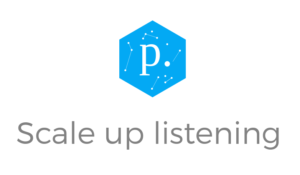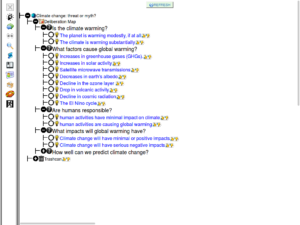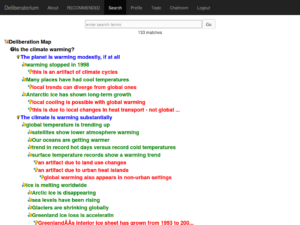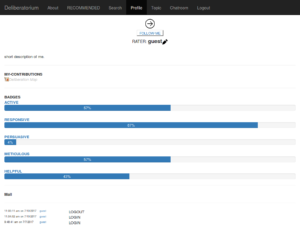At the end of June, the core research team – Graham Smith, Michael Morrell and Paolo Spada – met for the first time face-to-face rather than virtually. The meeting established a preliminary timeline. We aim to have an initial platform ready for October to begin user testing, which will end user testing by Christmas. That means by March we can have updated the platform and start the experiment. We also discussed at length the role of comment moderators. Should moderation be ex-ante? Many media comment platforms moderate contributors’ initial comments before they go live to ensure they are respectful and understand the rules of the platform. Depending on the level of comments, we should be able to do that with one facilitator for the European Time Zone and facilitator for the US time zone. The deliberatorium has generally been used with ex-ante facilitation whereas Pol.is is thinking about crowd moderation. We are weighing up the options. Do you have any evidence that could help us?
Author Archives: Paolo
The Monkey Cage
Today we had a skype conference call among the co-PIs and we decided that our experimental environment will be similar to the Monkey Cage. We selected the Monkey Cage because it is a medium size blog within the Wahington Post and is the perfect target for the level of engagement we can achieve with our current funding. We hope to engage somewhere between 5 to 10,000 people in our experiment. To create experimental group we will divide our community into 12 groups, so we will have less than a 1,000 people commenting on news in each group during the experiment. The Monkey Cage has a simple layout and has enough space at the bottom of each article to place our treatments. The next issue we need to decide is the topics for our experiment.
Polis
The second technology we will use in our experiment is Pol.is. Pol.is takes a very different approach to the Deliberatorium, aiming to work with emotions. The Pol.is interface is extremely simple. A user can vote (agree/disagree/don’t care) on the comments of other users presented in a random order, or can add her own comment. All the votes are then displayed on a map and clustered displaying users that agree on a set of issues. The objective of this platform is to draw a “climate report” of all the points of views among the users. It shows the existing coalitions of agreement among users and the fact that these coalitions are more fluid than people might think. This is an online version of an exercise often used in face- to- face deliberation, with a clever use of a simple user interface. In the face- to face- world participants voice their ideas or concerns and move around to cluster with those issues that resonate with them. It is an extremely useful exercise for group building and to show that we might disagree on some topics, but we often agree on others. We spoke with Colin who is the CEO of Pol.is and he is enthusiastic about the experiment and is going to help us make sure that our treatment is the best reflection of their philosophy as possible. He also hopes to test crowd-moderation via our experiment. We are not sure we will be able to do that, but we will see!
Follow the link:
Sprucing-up the Deliberatorium
One of the technologies that we will be testing in our experiment is the Deliberatorium. The Deliberatorium is one of the original collaborative argument mapping tools. It was developed at MIT by Mark Klein around 8 years ago and has been used successfully in a number of online discussion.
The Deliberatorium structures discussions significantly. Instead of being allowed to write whatever they desire, participants are encouraged to contribute following a specific structure. Participants can offer a single idea, raise a single question, or offer an argument in favor (PRO) or an argument against (CON). The argument structure is then visualized in a map that allows users to find information easily and visualize the number of arguments in favor or against particular ideas.
The advantage of the Deliberatorium , may also be its shortcoming: it promotes a very rational discussion that sterilizes loud and repetitive voices, and accounts for each idea and relevant , pros and cons only once. This is what makes it easier to navigate compared to standard comment platforms.
The existing Deliberatorium had a user interface that was very primitive so the first order of business of our project was to meet with Mark and figure out a way to transform an interface designed for academic purposes into one that is attractive to the public.
We decided to run a first design workshop in Portugal, because that is where I am based in and can tap into a local community of developers and practitioners of deliberation. This design workshop lasted one week and involved both members of my other project called EMPATIA, students at the University of Coimbra that work on deliberation and professionals from One Source the technology provider of the EMPATIA workshop. The result of this intense process was the creation of two redesigned interfaces, one inspired by the MAC philosophy of exploring files horizontally and one inspired by Google Play that works both horizontally and vertically.
This is just a first step and now Mark and Cristina Carnevali, our new team member specialized in UI , user interface, will collaborate on the upgrade of the interface so that it is mobile ready and engaging, while at the same time retaining the rigor and depth of the Deliberatorium.
Deliberatorium explained on wikipedia.
This is the past appearance of the deliberatorium:
Paolo Spada




